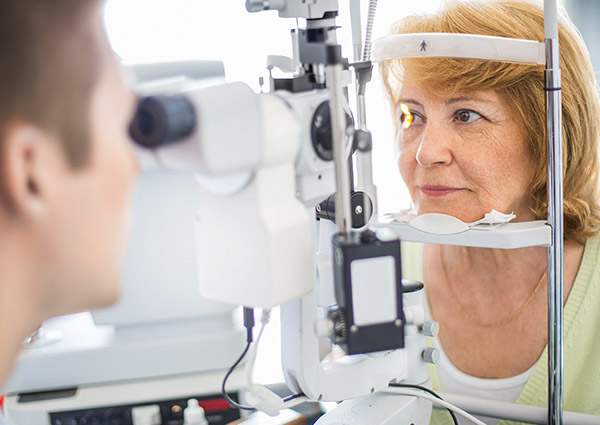
Diabetes: Effects on the Eyes
The two most common types of diabetes are type 1 and type 2. The primary difference between type 1 and type 2 diabetes is those with type 1 do not make enough insulin and those with type 2 cannot effectively use the insulin made by their bodies. Regardless of the cause, the inability to use the insulin prevents the cells from using the glucose from food and thus causing rising blood sugar levels. Because diabetes can lead to many health complications, including eye diseases that can cause long-term vision disability, it’s important to treat it early and prevent further complications.
Factors associated with diabetes, such as high blood sugar, high blood pressure and inflammation are known to cause or increase the risk of developing eye diseases. The following are the most common eye diseases associated with diabetes:
- Cataracts: Occurs when the clear lens of the eyes become cloudy or opaque. People with diabetes have a higher risk of developing cataracts in general and also at a younger age. Cataracts can severely impair vision and can also lead to blindness.
- Glaucoma: Results from pressure build-up in the eye, causing damage to the retina and the nerves that connect the eye to the brain; this can lead to vision loss. There are several types of glaucoma but the most common one is open-angle glaucoma.
- Diabetic retinopathy: Occurs when there is damage to the blood vessels in the retina. This can lead to distortions and blurring in vision and scarring on the retina; it can possibly lead to blindness.
- Diabetic macular degeneration: Caused by thickening of the retina or formation of hard particles on a part of the eye called the macula. This can cause moderate or severe vision loss.
One of the most important steps in preventing the eye complications associated with diabetes is by obtaining annual eye exams. Acuity, the most common test, measures the ability to see from a far distance. Other eye exams are conducted to measure the pressure in the eye and dilate the pupils to examine the retina and the nerves. The goal of the exams is to look for damage to the nerves of the eyes, changes in the lens, leaking blood vessels, or swelling in the macula. Patients with diabetes who have already developed eye conditions may be required to obtain more frequent exams. Regardless of whether a patient is trying to prevent diabetes-associated eye problems or trying to improve their symptoms, managing diabetes through better control of blood sugar is essential. Additionally, keeping cholesterol levels and blood pressure within the recommended range is just as important for keeping vision sharp. It’s important to discuss any symptoms of vision impairment with a healthcare provider so early interventions can be implemented.




